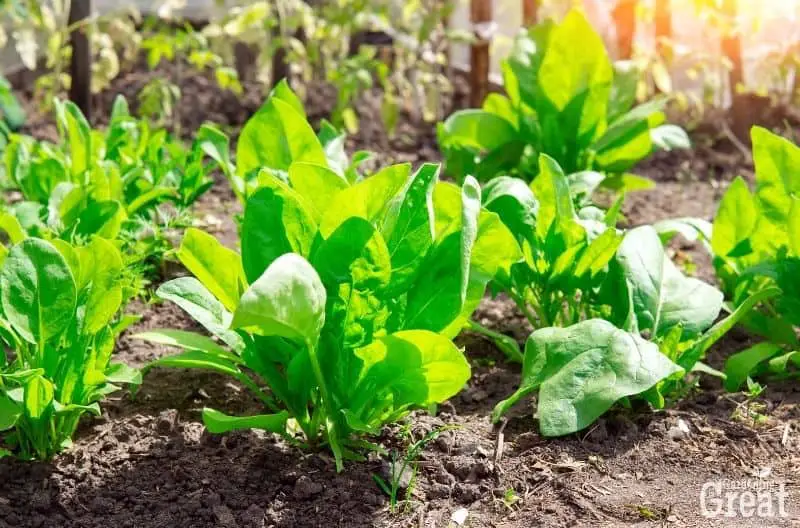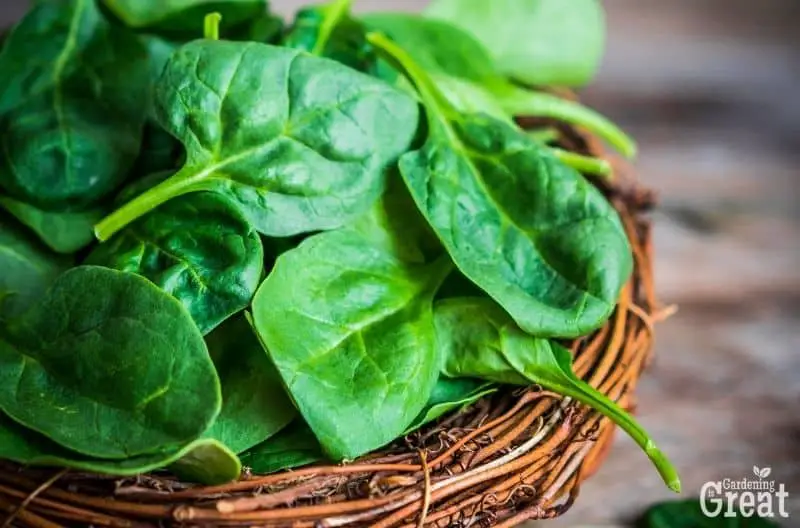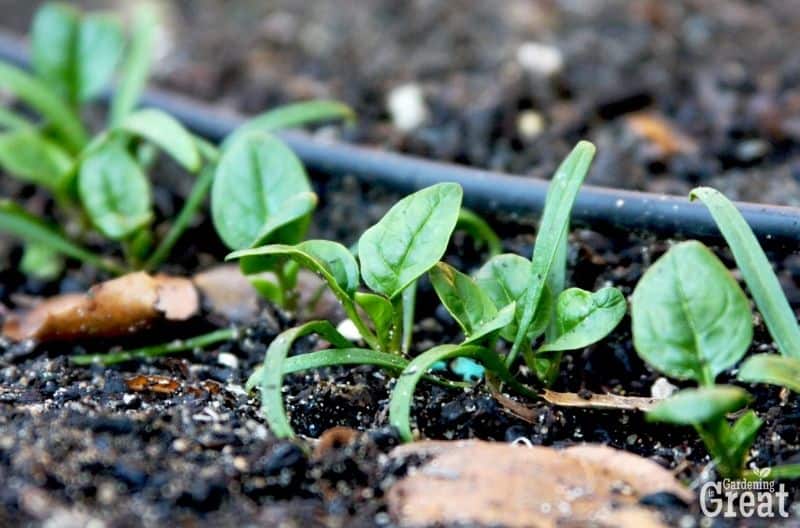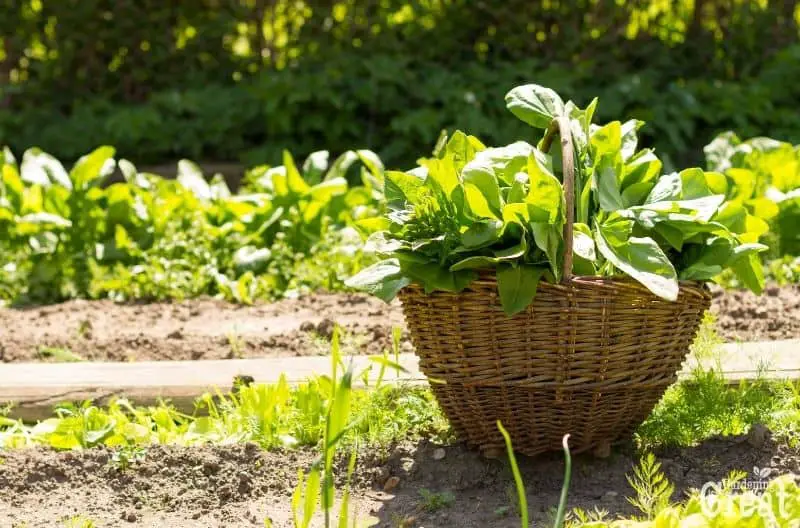How to Grow Spinach for Salads or Sandwiches
There are many benefits to growing spinach in your garden. It’s an easy and fast crop to grow, it is readily available year-round, and you can use the leaves for salads or sandwiches.
Growing spinach is also a great way to get kids involved in gardening because they’ll be able to harvest their own produce. And, not only is it simple to grow and maintain, it has a variety of delicious uses.

This post contains affiliate links that earn me a commission at no additional cost to you.
What are The Benefits of Spinach?
There is a reason Popeye enjoyed spinach as his vegetable of choice; it is packed with nutrition!
In addition to being low carb and high fiber, spinach is packed with iron, vitamin A, vitamin C, calcium, and more. It is a nutritional powerhouse that should be part of a healthy diet.
Spinach also contains compounds that may reduce inflammation, help strengthen eyesight, and other benefits.
Where Does Spinach Grow Best?
Spinach prefers to grow in cooler climates. However, it can be grown in both cool and warm areas, provided it is planted in the fall. It is best to check the USDA Plant Hardiness maps to determine if spinach will thrive in your area.

Spinach plants will tolerate a light frost and even a hard freeze if the plant and its roots have had time to acclimate to the cold and are covered to protect it slightly from the cold.
How to Plant Spinach
Spinach is one of the few plants that grow well in truly alkaline soil. This means that using a soil PH test, it has a reading of 7.0 or more. If your soil has a PH reading less than this, you will want to make necessary adjustments to raise the alkalinity of the ground so your spinach can thrive.
Because of this, raised beds are often used to grow spinach as raised bed garden soil is much easier to adjust than ground soil.
Spinach also needs to be fed well, and as such, you should prepare the soil well before you plant seed. To do this, mix 3-4 lbs of organic fertilizer for every 100 square feet into the soil very well.
As your plants grow, you will need to continue fertilizing every 4-6 weeks. In addition, mix a good amount, around 2-4”, of compost into the soil before planting.
Spinach can be successfully grown from transplants or seeds. For new gardeners, it is often easier to start with transplants.

Spinach seeds can be difficult to germinate during the warmer months, and those new to gardening may not have the necessary experience to do so.
If you are planting transplants, plant them in rows that are approximately 15” apart, with each transplant roughly 4” apart from each other.
Cover the roots and partial stems with about 2” of soil to help them stand properly. If you are planting germinated seeds, plant them closer together at first. You will need to do at least two passes to thin out the germinated seeds. In the end, leaving only the strongest starts at a spacing of 3-5” apart.
Spacing is vital when growing spinach. If your spinach plants are not spaced correctly, you will most likely have stunted plants. This will result in small leaves since your plants cannot get the proper nutrition they need to grow large.
You should plant spinach in well-draining soil. It requires a lot of water, but you could introduce disease to your plants if the soil is not well-draining.

If you are using raised beds, the soil you use should be fine for draining purposes, provided you have left drain spots in your raised bed design.
Since spinach is a cool-weather plant, you will want to do what you can to ensure the roots stay cool. This can include things such as using garden shade cloth and mulching the area.
Mulch not only provides shade for the plant but also helps to keep moisture locked in. This is especially important if you are planting during the late summer months versus waiting until fall.
Spinach Pests and Disease
Spinach is vulnerable to both insects and disease. Insects such as plant lice or aphids love to munch on the leaves.
Diseases such as white rust, blue mold, and soil-borne fungus are also a risk. A robust organic pesticide and advice from your local Ag extension can help you prevent these problems from happening.
How to Harvest Spinach
Spinach is ready to be harvested as soon as the outer leaves are large enough to eat.
However, when harvesting spinach, do not remove all leaves at once. Instead, harvest only the outer leaves, making sure to leave the inner leaves alone. This will ensure the plant continues to produce fresh spinach for you.

If you harvest all leaves at once, you will be ending your harvest earlier than necessary. However, be mindful not to leave them too long. If left too long, spinach plants will bolt and bloom. In the event this happens, the leaves will become bitter.
To prevent this, harvest the entire plant right before spring happens. This will ensure you only gather the most tender and flavorful leaves.
And for more vegetable-growing guides, be sure to read these next:


